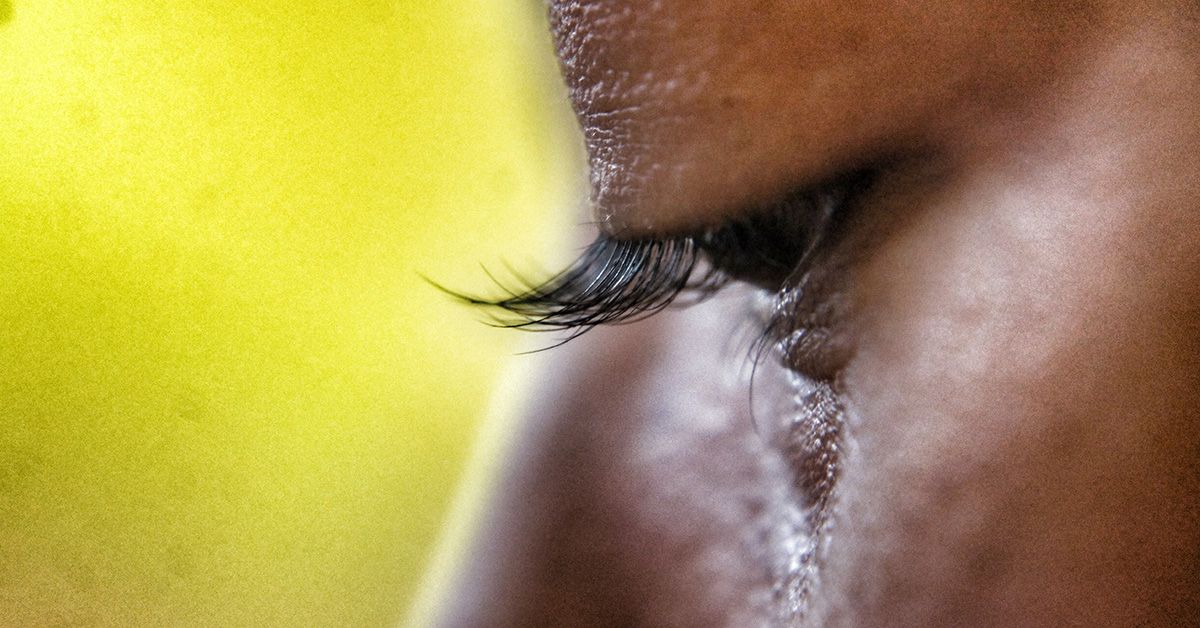Introduction

Importance of tears in our emotional and physical well-being
Background of tear research

Tear research has been a topic of interest for scientists and researchers for many years. The study of tears dates back to ancient civilizations, with early observations made by Greek philosophers such as Hippocrates and Aristotle. However, it was not until the 19th century that more in-depth scientific investigations into tears began. In the early 20th century, advancements in technology allowed for the analysis of tear composition and the identification of different types of tears. This research has provided valuable insights into the functions and benefits of tears, both emotionally and physically.
Types of Tears
There are three types of tears that the human body produces: basal tears, reflex tears, and emotional tears. Basal tears are continuously produced to keep the eyes lubricated and protected from bacteria. Reflex tears are triggered by irritants such as onions or dust, and they help to flush out these substances from the eyes. Emotional tears, on the other hand, are produced in response to strong emotions such as sadness, joy, or frustration. Each type of tear serves a specific function in maintaining the health and well-being of our eyes and emotional state.
The three different types of tears

There are three different types of tears: basal tears, reflex tears, and emotional tears. Basal tears are constantly produced to keep the eyes lubricated and prevent dryness. Reflex tears are a response to irritants such as smoke or onion fumes, and they help to flush out these irritants from the eyes. Emotional tears, on the other hand, are triggered by strong emotions like sadness, joy, or grief. They contain stress hormones and toxins that are released from the body through crying. Each type of tear serves a specific function in maintaining eye health and emotional well-being.
Functions of each type of tear

Each type of tear serves different functions in our bodies. Basal tears, the most common type, keep our eyes lubricated and prevent dryness. They also help to wash away debris and protect against infections. Reflex tears are produced in response to irritants such as onion fumes or dust, and their function is to flush out these irritants. Emotional tears, triggered by emotions such as sadness or joy, are thought to release stress hormones and promote emotional well-being. Overall, tears play a vital role in maintaining eye health and emotional balance.
Emotional Tears

What are emotional tears?
Emotional tears are the tears that are shed in response to intense emotions such as sadness, joy, anger, or frustration. They are different from other types of tears, such as reflex tears or basal tears, which serve primarily to lubricate and protect the eyes. Emotional tears contain higher levels of stress hormones and proteins associated with emotional processing. These tears are triggered by the brain's limbic system, which is responsible for regulating emotions. Crying can be a natural and healthy way to release and process intense emotions, providing a sense of relief and catharsis.
Benefits of crying for emotional release
Physical Tears

Physical tears, also known as basal tears, are the most common type of tears produced by the human body. These tears serve a vital physical function, lubricating and protecting the eyes by keeping them moist and preventing dryness. Physical tears contain essential substances like water, oils, proteins, and antibodies that help nourish the eyes and fight against infections. Additionally, they help flush out debris and irritants that may come into contact with the eyes. The production of physical tears is a natural response to keep our eyes healthy and functioning properly.
What are physical tears?

Physical tears, also known as basal tears, are the tears that constantly lubricate and protect the eyes. They are produced by the lacrimal glands and spread across the surface of the eye whenever we blink. These tears contain a combination of water, oils, mucus, and antibodies that help to keep the eyes moisturized and free from debris. Physical tears serve a vital function in maintaining eye health by preventing dryness and irritation, as well as providing a protective barrier against harmful substances.
Scientifically proven benefits of physical tears

Physical tears, also known as basal tears, serve important functions in maintaining the health and well-being of our eyes. They contain a combination of water, oils, proteins, and antibodies that help lubricate and protect the surface of the eye. These tears also assist in washing away foreign particles and preventing infections. Scientific research has shown that the regular production of physical tears is crucial for maintaining clear vision and reducing the risk of eye-related conditions such as dry eye syndrome. Therefore, shedding physical tears is not only natural but also beneficial for our ocular health.
The Science Behind Tears

Tears are produced by the tear ducts, also known as lacrimal glands, located above each eye. These tear ducts serve to lubricate and protect the eyes from irritants such as dust or foreign objects. Tears are composed of water, oils, mucous, and antibodies that help fight off infections. When we cry, tears are released as a response to emotional or physical stimuli. The act of crying has been scientifically proven to have various benefits on our physical and emotional well-being.
Tear ducts and their functions

Tear ducts, also known as lacrimal ducts, are small tubes that carry tears from the eyes to the nasal cavity. They play a crucial role in maintaining eye health and moisture. The tear ducts are responsible for draining excess tears, preventing them from overflowing onto the face. Additionally, they help to distribute the necessary lubrication and nutrients across the surface of the eyes. Dysfunction or blockage of the tear ducts can lead to watery or dry eyes, highlighting their importance in maintaining proper eye function.
Chemical composition of tears and their effects on the body

The chemical composition of tears plays a crucial role in their effects on the body. Tears are made up of water, electrolytes, enzymes, proteins, and hormones. These components work together to provide various benefits. Water helps to keep our eyes hydrated and maintain their health. Electrolytes help to balance the pH levels in our tears and prevent dryness. Enzymes and proteins have antibacterial properties that protect our eyes from infections. Hormones found in tears can help regulate our mood and reduce stress. Overall, the chemical composition of tears contributes to their healing and therapeutic effects on the body.
The Link between Tears and Empathy

Tears and empathy share a profound connection. When we witness someone else's emotional distress or empathize with their experiences, our tear ducts may activate, leading to tears. This response is rooted in our innate ability to connect with others on an emotional level. Tears help us express and process our own emotions while also signaling to others that we understand their pain. Research suggests that crying in response to empathy strengthens social bonds and fosters a deeper sense of compassion and understanding among individuals.
How empathy causes tears

Empathy, the ability to understand and share the feelings of another, can trigger tears in individuals. When someone witnesses or hears about the pain, suffering, or joy of others, their empathetic response can evoke an emotional release through tears. This occurs because empathy activates the brain's mirror neurons, which enable individuals to experience emotions as if they were personally involved. The emotional connection formed through empathy allows individuals to connect on a deeper level with others' experiences and prompts the release of tears as a natural response.
Why crying helps us feel more connected
Tear-Jerking Media

Tear-Jerking Media:
Tear-jerking media, such as movies and TV shows, have the power to evoke strong emotional responses and bring tears to our eyes. This phenomenon can be attributed to several factors, including compelling storytelling, relatable characters, and poignant themes. When we become emotionally invested in a story or its characters, our empathy is triggered, leading to a release of emotions through tears. This emotional release can be therapeutic, allowing us to process and connect with our own feelings on a deeper level. Tear-jerking media serves as a powerful reminder of the impact stories can have on our emotions and overall well-being.
Why we cry during movies and TV shows

During emotional scenes in movies and TV shows, many people find themselves shedding tears. This phenomenon can be attributed to the power of storytelling and its ability to evoke strong emotions. When we become emotionally invested in characters and their experiences, we empathize with their joys and sorrows. The combination of well-crafted narratives, compelling performances, and relatable themes can trigger a deep emotional response. As a result, we may find ourselves shedding tears as a natural expression of our empathy and connection to the story being portrayed on the screen.
The therapeutic effect of emotional release

The therapeutic effect of emotional release is a significant benefit of crying. When we allow ourselves to express our emotions through tears, it can provide a sense of relief and release. Crying acts as a cathartic experience, allowing us to process and let go of pent-up emotions such as sadness, grief, or frustration. It can help in reducing stress and improving overall mental well-being. By allowing ourselves to cry and release our emotions, we can experience a sense of emotional healing and find solace in the cathartic power of tears.
Crying and Cultural Norms

Cultural norms regarding crying vary across different societies and can influence how individuals perceive and express their emotions. In some cultures, crying may be seen as a sign of weakness or vulnerability, leading individuals to suppress their tears. However, in other cultures, crying is considered a natural and acceptable response to emotional situations. These cultural norms can impact how people understand and cope with their emotions. Understanding and accepting cultural differences surrounding crying can contribute to emotional well-being and foster a more inclusive society.
Stigma surrounding crying in certain cultures

In certain cultures, there is a stigma surrounding crying. In these societies, crying may be seen as a sign of weakness or vulnerability. Individuals who cry in public may be judged or seen as lacking emotional control. This cultural expectation can lead to individuals suppressing their emotions and not allowing themselves to express their feelings through tears. However, it is important to recognize that crying is a natural and healthy way to release emotions and should be accepted and supported in all cultures.
The social and psychological benefits of accepting and expressing emotions

Expressing and accepting emotions have significant social and psychological benefits. When individuals allow themselves to openly express their emotions, it fosters a sense of authenticity and vulnerability, leading to stronger connections with others. By sharing their feelings, individuals can also receive support and understanding from their social network, which can alleviate emotional distress. Moreover, expressing emotions helps individuals process and make sense of their experiences, leading to improved emotional well-being and mental health. It allows for personal growth and contributes to building healthier relationships with oneself and others.
Conclusion

In conclusion, the latest research on tears highlights their significant impact on our emotional and physical well-being. Tears serve various functions, including emotional release and physical healing. The science behind tears reveals the complex chemical composition and their effects on the body. Tears also play a role in empathy and fostering connections with others. Despite cultural norms and stigmas surrounding crying, accepting and expressing emotions can have social and psychological benefits. Understanding the surprising power of tears has implications for improving both emotional and physical health.
Summary of the surprising power of tears
Tears, both emotional and physical, play a crucial role in our overall well-being. The latest research highlights the surprising power of tears in our lives. Emotional tears provide a release for pent-up emotions, promoting emotional healing and relieving stress. Physical tears, on the other hand, help to protect and lubricate our eyes, preventing infection and maintaining eye health. Tears also contain various chemicals that can affect our bodies and emotions. Additionally, crying can foster empathy and strengthen social connections. By accepting and expressing our emotions, we can reap the psychological and social benefits associated with tears.
Implications for emotional and physical health

Tears have significant implications for both emotional and physical health. Emotionally, crying provides a release of pent-up feelings and allows for a cathartic experience. It can help reduce stress, improve mood, and provide emotional relief. Physically, tears play a crucial role in maintaining eye health by keeping the eyes lubricated and preventing dryness and irritation. Additionally, tears contain antibodies that help fight against bacteria and keep our eyes protected from infections. Overall, tears contribute to our overall well-being by promoting emotional regulation and maintaining optimal eye health.
